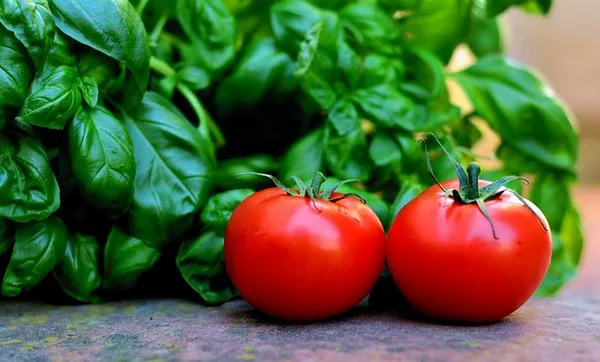Tomatoes are a staple in many kitchens, renowned for their versatility and rich flavor. Whether you’re a seasoned gardener or a novice with a green thumb, growing your own tomatoes can be a rewarding experience. However, success requires careful planning, proper technique, and a bit of patience. In this comprehensive guide, we will walk you through the steps to plant and nurture robust tomato plants, ensuring a bountiful harvest.
Choosing the Right Tomato Varieties
Before you start planting, it’s crucial to select the right tomato varieties based on your preferences and growing conditions. Determinate varieties are compact and suitable for container gardening, while indeterminate varieties are more sprawling and better for larger garden spaces. Consider factors like climate, available space, and intended use (slicing, canning, or cherry tomatoes) when making your selection.
Preparing the Soil
Tomatoes thrive in well-draining, nutrient-rich soil. Begin by testing your soil’s pH level, aiming for a slightly acidic to neutral range between 6.0 and 7.0. Amend the soil with organic matter, such as compost or well-rotted manure, to improve fertility and drainage. Tomatoes are particularly sensitive to soil-borne diseases, so opting for raised beds or containers can mitigate these risks.
Planting Seeds Indoors
Start your tomato plants from seeds indoors about 6-8 weeks before the last expected frost in your region. Use seed trays or small pots filled with a high-quality seed-starting mix. Plant the seeds about 1/4 inch deep, water them gently, and cover the containers with plastic wrap to create a greenhouse-like environment. Keep the soil consistently moist and place the containers in a warm, well-lit area.
Transplanting Seedlings
Once the seedlings have developed their second set of leaves, it’s time to transplant them into larger pots or directly into the garden. Choose a cloudy day or late afternoon for transplanting to minimize stress on the plants. When moving seedlings outdoors, gradually expose them to the outdoor environment for a few hours each day to acclimate them to sunlight, wind, and temperature fluctuations.
Selecting the Right Location
Tomatoes require at least 6-8 hours of direct sunlight daily for optimal growth and fruit production. Choose a location with well-draining soil and protection from strong winds. Proper air circulation is essential to prevent diseases, so avoid planting tomatoes too close together. If space is limited, consider using stakes, cages, or trellises to support the plants and keep them off the ground.
Planting in the Ground
When transplanting seedlings into the garden, dig a hole deep enough to bury the plant up to its first set of leaves. This encourages the development of a strong root system. Space indeterminate varieties about 2-3 feet apart and determinate varieties 1-2 feet apart. Water the plants thoroughly after transplanting and mulch around the base to retain moisture, suppress weeds, and regulate soil temperature.
Watering and Fertilizing
Consistent and adequate watering is crucial for tomato plants. Water deeply, aiming to keep the soil consistently moist but not waterlogged. Inconsistent watering can lead to problems like blossom-end rot and cracking. Use a balanced, slow-release fertilizer when planting and side-dress with additional fertilizer when the first fruits appear. Avoid over-fertilizing, as this can lead to excessive foliage growth at the expense of fruit production.
Pruning and Supporting Tomato Plants
Pruning helps control the size and shape of the tomato plants, improves air circulation, and facilitates easier harvesting. Remove the suckers (side shoots) that develop in the crotches of the main stem and branches. Indeterminate varieties, especially, benefit from staking, caging, or trellising to support their sprawling growth. This not only prevents the plants from toppling over but also exposes the foliage to more sunlight, promoting better fruit development.
Pest and Disease Management
Tomatoes are susceptible to various pests and diseases, such as aphids, hornworms, and blight. Regularly inspect your plants for signs of infestation, and take prompt action if you notice any issues. Consider using companion planting techniques, such as planting basil or marigolds nearby, to repel pests. Neem oil, insecticidal soap, and other organic remedies can help control common tomato pests without resorting to harsh chemicals.
Harvesting
The moment of truth arrives when you start harvesting ripe tomatoes from your plants. The best time to pick tomatoes depends on the variety, but generally, they should be fully colored and firm but not rock-hard. Gently twist or cut the fruits from the vine, taking care not to damage the plant. Harvesting regularly encourages continued fruit production and prevents overloading the plant, which can lead to smaller fruits.
See Also: How To Care For Basil Plants In Pots?A Comprehensive Guide
Conclusion
Growing tomatoes is a fulfilling endeavor that rewards patience, care, and attention to detail. By selecting the right varieties, preparing the soil adequately, providing optimal growing conditions, and managing pests and diseases effectively, you can enjoy a bountiful harvest of delicious, homegrown tomatoes. Whether you’re a seasoned gardener or a novice, the journey of nurturing tomato plants is an opportunity to connect with nature, savor the fruits of your labor, and relish the satisfaction of growing your own produce.


